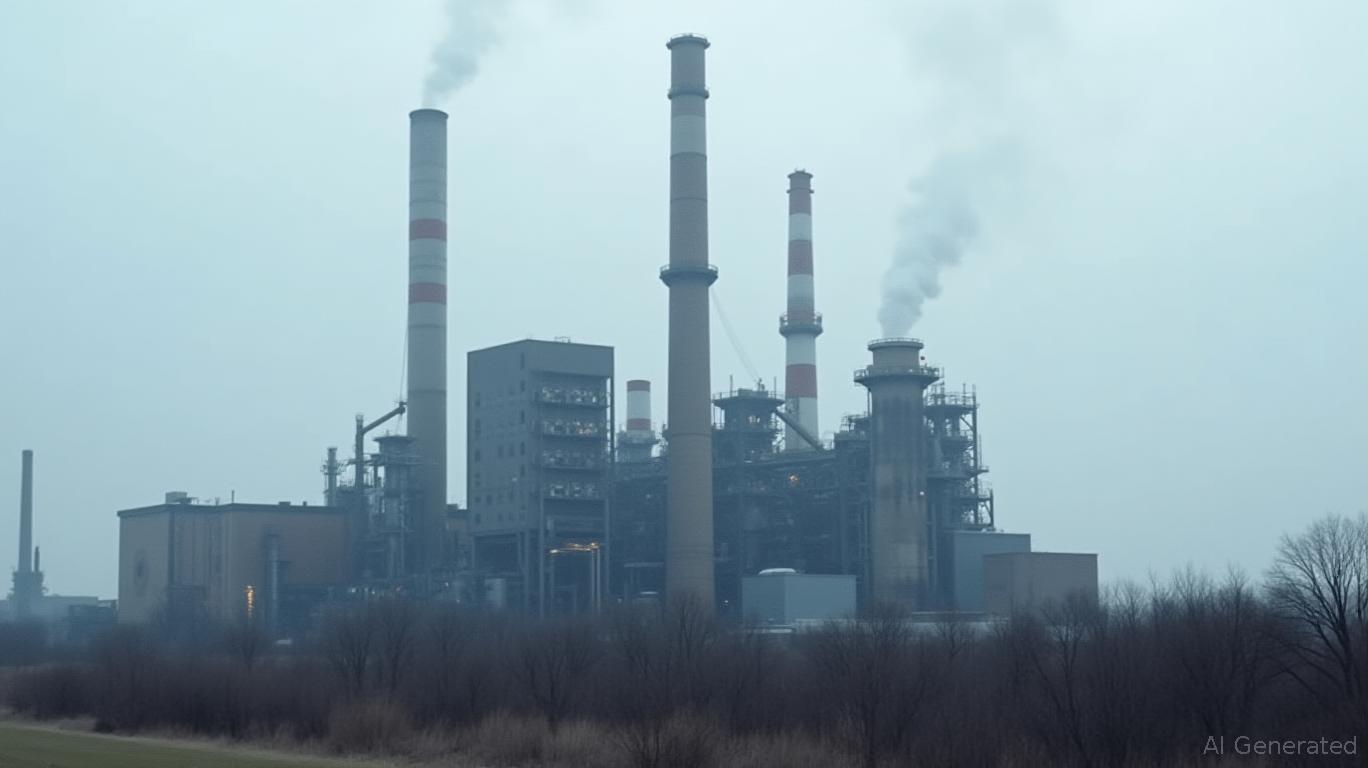Algoma Steel: Navigating Tariff Turbulence Toward a Resilient Future
The Canadian steel producer
Inc. finds itself at a pivotal crossroads. Recent credit downgrades, escalating U.S. tariffs, and a costly transition to new production methods have cast a shadow over its near-term prospects. Yet beneath the immediate challenges lies a strategic opportunity to redefine its competitive position—if it can survive the storm. For investors, this is a story of precarious risks and latent rewards, demanding a cautious "hold" stance until clarity emerges on tariffs and operational execution.The Credit Downgrade: A Wake-Up Call
On March 12, 2025, S&P Global Ratings downgraded Algoma's credit rating to CCC+, citing the 25% U.S. tariffs on Canadian steel imports as the primary catalyst. These tariffs, now in effect for over a year, have slashed Algoma's margins: its Q1 2025 EBITDA turned negative to -$46.7 million, with tariff-related costs alone hitting $10.5 million. The downgrade reflects growing concerns about its liquidity: while Algoma has $227 million in cash and $361 million in credit availability, its reliance on U.S. sales (60% of revenue) leaves it vulnerable to further tariff hikes or prolonged trade disputes.

The CCC+ rating signals a high risk of default unless two critical pivots occur: a reduction in U.S. tariffs or a successful transition to its new electric arc furnace (EAF) project, which aims to slash costs and emissions.
The EAF Project: A Lifeline or Pipe Dream?
Algoma's salvation hinges on the completion of its $1.1 billion EAF project, designed to replace outdated blast furnaces with modern electric alternatives. The first furnace is operational, with the second expected by year-end, enabling a full shift from blast furnaces by 2026. The benefits are clear: EAFs reduce reliance on coking coal, cut emissions by 40%, and lower fixed costs by eliminating legacy infrastructure expenses.
However, execution risks loom large. A delay in ramp-up or cost overruns could strain liquidity. The company's ability to secure Canadian government subsidies or negotiate tariff exemptions—such as those under the U.S.-Mexico-Canada Agreement (USMCA)—will be critical to funding this transition.
The Defense Sector: A Silver Lining in the Storm
While U.S. tariffs dominate headlines, Algoma's defense sector exposure offers a rare bright spot. Canadian defense contracts, particularly for plate products used in military infrastructure, are growing. The federal government's focus on domestic military procurement and infrastructure spending has boosted demand for Algoma's specialized steel.
Yet this opportunity is tempered by tariffs. Even defense-related shipments face the 25% duty unless exempted under clauses like FAR 52.225-8 (duty-free entry for government vessels) or DFARS 252.225-7013 (exemptions for qualifying countries). Algoma must aggressively pursue such carve-outs while lobbying for broader USMCA-based relief.
The Investment Case: Hold Until the Fog Lifts
For investors, the calculus is stark:
Near-Term Risks:
- Tariff persistence: If U.S. tariffs remain at 25% (or rise further), cash burn could deplete liquidity by 2026.
- EAF delays: Operational hiccups could delay cost savings, prolonging margin pressure.
- Debt pressures: The CCC+ rating exposes Algoma to higher borrowing costs and restrictive covenants.
Long-Term Opportunities:
- EAF-enabled cost discipline: Full transition by 2026 could reduce fixed costs by $30–50 million annually.
- Defense demand resilience: Stable government contracts provide a hedge against cyclical steel demand.
- Tariff resolution: A U.S.-Canada trade deal or USMCA carve-out could reverse the tariff overhang.
Conclusion: Wait for the Turn
Algoma Steel is a classic “high-risk, high-reward” play. While its EAF project and defense contracts offer a path to sustainability, the near-term risks—tariffs, liquidity, and execution—are existential. Investors should hold the stock until two milestones materialize:
1. Tariff reduction or exemption: Watch for USMCA updates or diplomatic breakthroughs.
2. EAF ramp-up success: Track Q3/Q4 2025 production data to confirm cost savings.
Historical performance underscores the risks of short-term trading: a strategy of buying on earnings announcements and holding for 30 days from 2020 to 2025 underperformed the market, yielding a total return of 27.55% versus the benchmark's 99.02%. This strategy also faced a maximum drawdown of -35.33%, highlighting the volatility inherent in timing the stock. As such, a disciplined hold approach, avoiding speculative trades, remains prudent until clarity emerges.
Until then, Algoma remains a speculative bet. The steelmaker's future is not yet written—but the pen lies in the hands of trade policymakers and its own operational prowess.

Comments
No comments yet